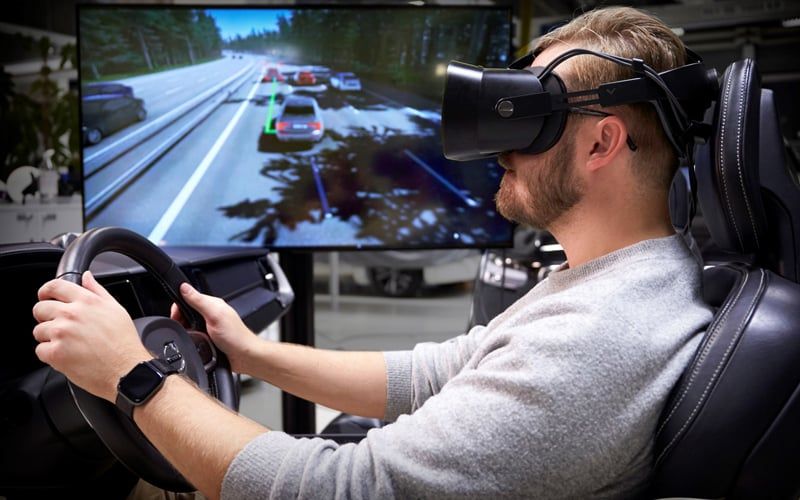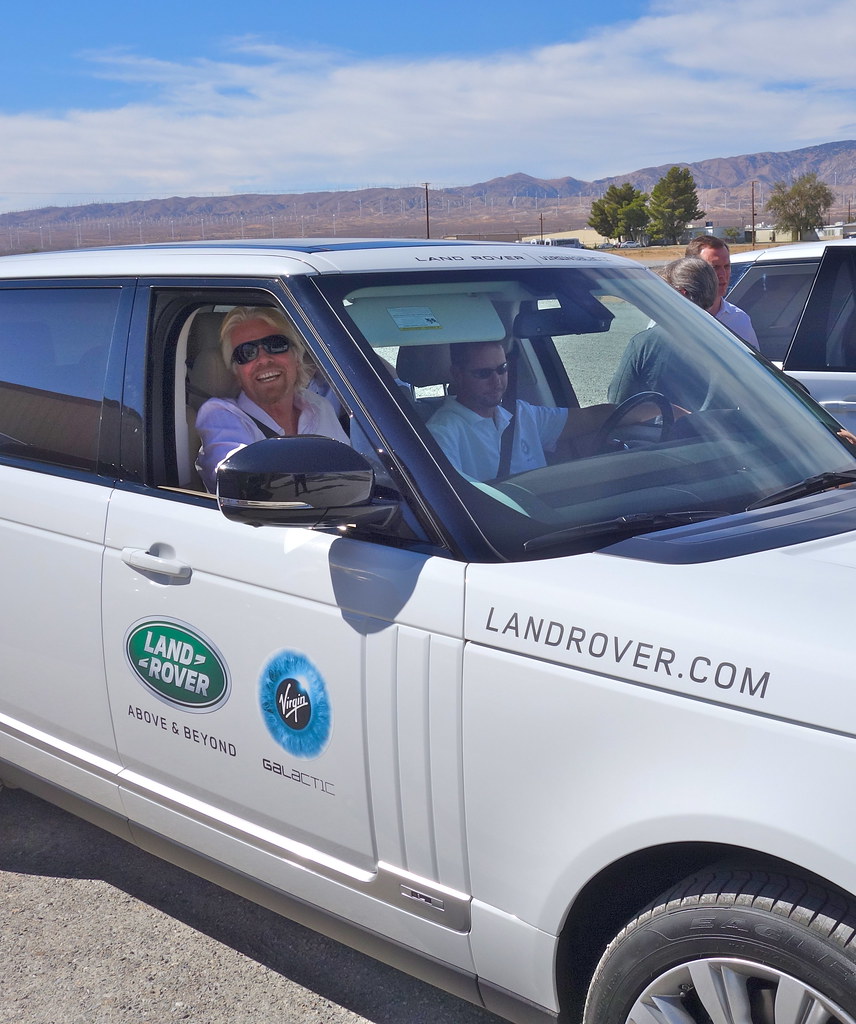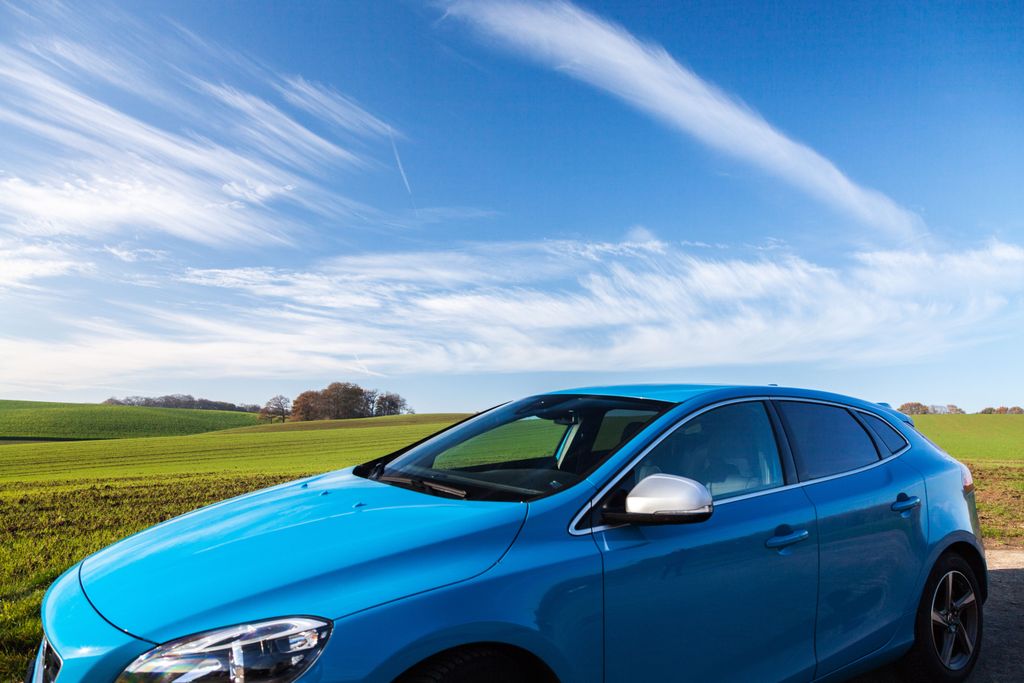
Have you ever paused to consider the profound implications of your vehicle choice? It’s far more than a mere mode of transport; the car you command on the road serves as a silent, yet incredibly potent, reflection of your inner self and outward aspirations. From its brand and model to its color, every detail inadvertently broadcasts a message about your personality, your values, and even your subconscious desires to the world around you.
Indeed, our vehicles are deeply intertwined with our identity, offering a fascinating glimpse into who we are and how we wish to be perceived. While anecdotal observations have long fueled common car stereotypes, there’s a surprising depth to these perceptions. Experts have delved into the true personality traits associated with various models, revealing how deeply our automotive preferences intersect with our individual behavior and societal roles.
This article embarks on an insightful journey, breaking down the code of what your car truly says about you. We’ll explore a range of iconic vehicles and universal car owner archetypes, examining the ‘why it matters’ aspect of each choice. Prepare to discover the intricate connections between metal, mechanics, and human psychology, understanding how your ride crafts your narrative on life’s grand highway.
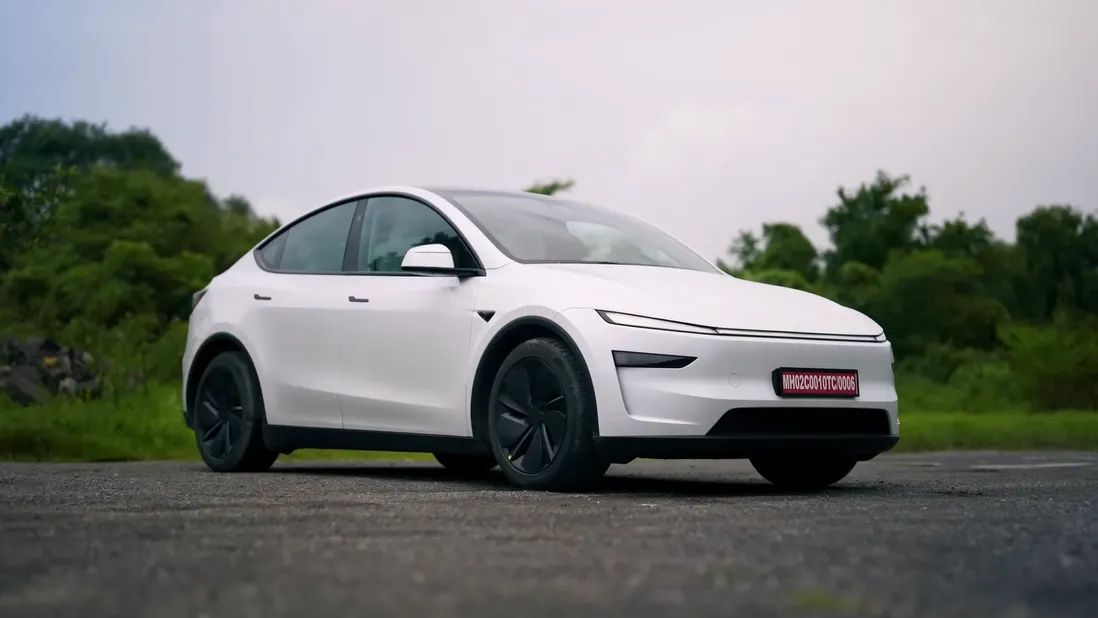
1. **The Tesla Model S: A Glimpse into the Future-Forward Pioneer**Zooming into the future, the Tesla Model S embodies an electric attitude, redefining luxury with its silent speed and advanced technology since its debut in 2012. Early models might have lacked Autopilot, but that certainly didn’t deter the visionary drivers who were eager to embrace innovation. Choosing a Model S signals a commitment to progress, indicating that it isn’t merely an option, but a fundamental default setting for you.
Our expert psychologist describes those who drive a Tesla as pioneering and innovative, much like the man behind the brand, Elon Musk. In a landscape where many drivers still harbor anxieties about transitioning to electric vehicles, those who have already invested in a Tesla are likely to be daredevils, willing to gamble on a cause they deeply believe in. This choice reflects a mindset that prioritizes long-term impact and environmental consciousness, often at a premium.
Beyond personal conviction, driving a Tesla makes a clear statement about one’s forward-thinking nature and willingness to take calculated risks. It speaks to an individual who is not just keeping up with trends but actively shaping them, comfortable navigating uncharted technological territories. It’s a declaration that you’re not just observing the future; you’re driving it.
Car Model Information: 2017 Honda Civic Sport
Name: Tesla Model S
ModelYears: 2013–present
Alt: A front-three quarter view of a gray Model S
Caption: #2016–2019: First major update
Designer: Franz von Holzhausen
Weight: cvt
Height: cvt
Width: cvt
Length: cvt
Wheelbase: cvt
ElectricRange: cvt
Battery: kWh,lithium-ion battery
Motor: Unbulleted list
Transmission: Reduction drive
Related: Tesla Model X
Layout: Rear-motor, rear-wheel drive,Dual-motor, all-wheel-drive,Tri-motor, all-wheel-drive layout
BodyStyle: liftback,sedan (automobile)
Class: Full-size car
Assembly: Unbulleted list
Production: June 2012 – present
Manufacturer: Tesla, Inc.
Sp: us
Chassis: Unibody
Categories: 2020s cars, All-wheel-drive vehicles, All Wikipedia articles written in American English, All articles containing potentially dated statements, Articles containing potentially dated statements from 2025
Summary: The Tesla Model S is a battery-electric, four-door full-size car produced by the American automaker Tesla since 2012. The automaker’s second vehicle and longest-produced model, the Model S has been described as one of the most influential electric cars in the industry. Car and Driver named it one of the best cars of the year in 2015 and 2016. Its various accolades include the Motor Trend Car of the Year Award in 2013.
Tesla started developing the Model S around 2007 under the codename WhiteStar. Initially, Henrik Fisker was appointed as the lead designer for the WhiteStar project; after a dispute with Elon Musk, Tesla’s CEO, Fisker was replaced by Franz von Holzhausen. By 2008, von Holzhausen had designed what would become the production Model S’s exterior. Tesla unveiled a prototype of the vehicle in March 2009 in Hawthorne, California. In 2010, Tesla acquired a facility in Fremont, California, to produce the Model S, which was previously owned by General Motors and Toyota. Series manufacture of the car officially began at the Tesla Fremont Factory in June 2012. Tesla carried out the final assembly for European markets at its facilities in Tilburg, Netherlands, between 2013 and 2021.
The Model S typically uses either one or initially two alternating current induction motors; since 2019, dual-motor versions have used a permanent magnet motor in the front, though the high-performance Model S Plaid’s three motors are permanent magnet units by default. Constructed mostly of aluminum, the Model S shares 30 percent of its components with the Model X—a crossover SUV that was introduced in 2015. The Model S has undergone several updates during its production, the most prominent ones occurring in 2016 and 2021. These updates have usually included modifications to the motor, such as changes to power or torque, revised exterior elements, and refreshed interior features. One such change included the 2015 introduction of Tesla Autopilot—a partial vehicle automation advanced driver-assistance system.
In 2015, the Model S was the world’s best-selling plug-in electric vehicle. In 2012, it was included on Time’s list of the Best Inventions of the Year, and the magazine later included it on its list of the 10 Best Gadgets of the 2010s in 2019. In 2014, The Daily Telegraph described the Model S as a “car that changed the world”. Road & Track argued that, with the introduction of the Plaid and features such as the yoke steering wheel, Tesla managed to turn the Model S into “perhaps one of the worst [cars in the world]”.
Get more information about: Tesla Model S
Buying a high-performing used car >>>
Brand: Tesla Model: Model S
Price: $17,995 Mileage: 80,872 mi.
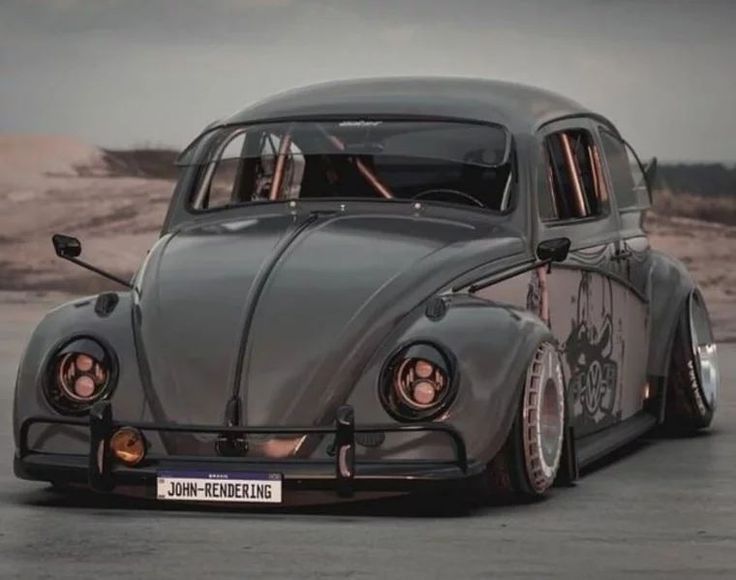
2. **The Volkswagen Beetle: The Creative Traditionalist with Charm**Born in 1938 and beloved by generations of students and style rebels, the Volkswagen Beetle has never been merely a car; it’s a vibrant conversation starter, a personality with headlights. Even after production of its latest iteration concluded in 2019, its legacy endures, representing a vehicle that consistently defied fleeting trends and horsepower statistics in favor of undeniable charm.
If you find yourself behind the wheel of this iconic bug, your personality likely aligns with its distinctive curves. Our expert notes that the iconic design suggests the driver is creative and thinks outside the box, valuing originality over conformity. These drivers are also described as having traditional values, often following their heart rather than the dictates of modern automotive marketing.
Owning a Beetle signifies a unique blend of nostalgia and individual expression. You’re someone who appreciates enduring design and a storied past, demonstrating that you don’t care much for fleeting fads. It’s a testament to a person who values character and soul in their possessions, making a statement about their artistic sensibility and their heartfelt connection to history.
Car Model Information: 1978 Volkswagen Beetle (Pre-1980) Base
Sp: uk
Name: Volkswagen Type 1,”Beetle”
Caption: 1965–1966 Volkswagen Käfer
Manufacturer: Volkswagen
Alt: A front-three quarters view of a pale-yellow Volkswagen Käfer. It features 165/80R15 tires, which shod 15×4. 5″ silver, circular wheels. The Käfer features a beetle-like body, and its window is open. The picture is taken with much greenery in the background, and the photo was edited to give it a more warmer tone.
Aka: List of names for the Volkswagen Type 1
Assembly: #Markets and assembly
Designer: Ferdinand Porsche
Class: Small family car
BodyStyle: Sedan (automobile),convertible
Production: 1938–2003,21,529,464 produced
Successor: Volkswagen Golf Mk1,Volkswagen Gol#First generation (Typ30, 1980),Volkswagen New Beetle
Layout: Rear-engine, rear-wheel-drive layout
Engine: Petrol,Volkswagen air-cooled engine,1192 cc H4,1285 cc H4,1493 cc H4,1584 cc H4
Transmission: manual transmission,Saxomat,Autostick
Wheelbase: convert
Length: convert
Width: convert
Height: 1500 mm
Abbr: on
Weight: convert
Categories: 1940s cars, 1950s cars, 1960s cars, 1970s cars, 1980s cars
Summary: The Volkswagen Beetle, officially the Volkswagen Type 1, is a small family car produced by the German company Volkswagen from 1938 to 2003. Considered a global cultural icon, the Beetle is widely regarded as one of the most influential cars of the 20th century. Its production period of 65 years is the longest of any single generation of automobile, and its total production of over 21.5 million is the most of any car of a single platform and the second-most of any nameplate produced in the 20th century.
The Beetle was conceived in the early 1930s. The leader of Nazi Germany, Adolf Hitler, decided there was a need for a people’s car—an inexpensive, simple, mass-produced car—to serve Germany’s new road network, the Reichsautobahn. The German engineer Ferdinand Porsche and his design team began developing and designing the car in the early 1930s, but the fundamental design concept can be attributed to Béla Barényi in 1925, predating Porsche’s claims by almost ten years. The result was the Volkswagen Type 1 and the introduction of the Volkswagen brand. Volkswagen initially slated production for the late 1930s, but the outbreak of war in 1939 meant that production was delayed until the war had ended. The car was originally called the Volkswagen Type 1 and marketed simply as the Volkswagen. It was not until 1968 that it was officially named the “Beetle”.
Volkswagen implemented designations for the Beetle in the 1960s, including 1200, 1300, 1500, 1600, 1302, and 1303. Volkswagen introduced a series of large luxury models throughout the 1960s and 1970s—comprising the Type 3, Type 4 and K70—to supplement the Beetle, but none of these models achieved the level of success that it did. Rapidly changing consumer preferences toward front-wheel drive compact hatchbacks in Europe prompted Volkswagen’s gradual shift away from rear-wheel drive, starting with the Golf in 1974. In the late 1970s and ’80s, Japanese automakers began to dominate some markets around the world, which contributed to the Beetle’s declining popularity.
Over its lifespan, the Beetle’s design remained consistent, yet Volkswagen implemented over 78,000 incremental updates. These modifications were often subtle, involving minor alterations to its exterior, interior, colours, and lighting. Some more noteworthy changes included the introduction of new engines, models and systems, such as improved technology or comfort. The Beetle maintains a substantial cultural influence and is regarded as one of the most iconic vehicles in automotive history; its success largely influenced the way automobiles are designed and marketed, whilst propelling Volkswagen’s introduction of a Golf-based series of vehicles.
Get more information about: Volkswagen Beetle
Buying a high-performing used car >>>
Brand: Volkswagen Model: Beetle
Price: $17,499 Mileage: 97,000 mi.
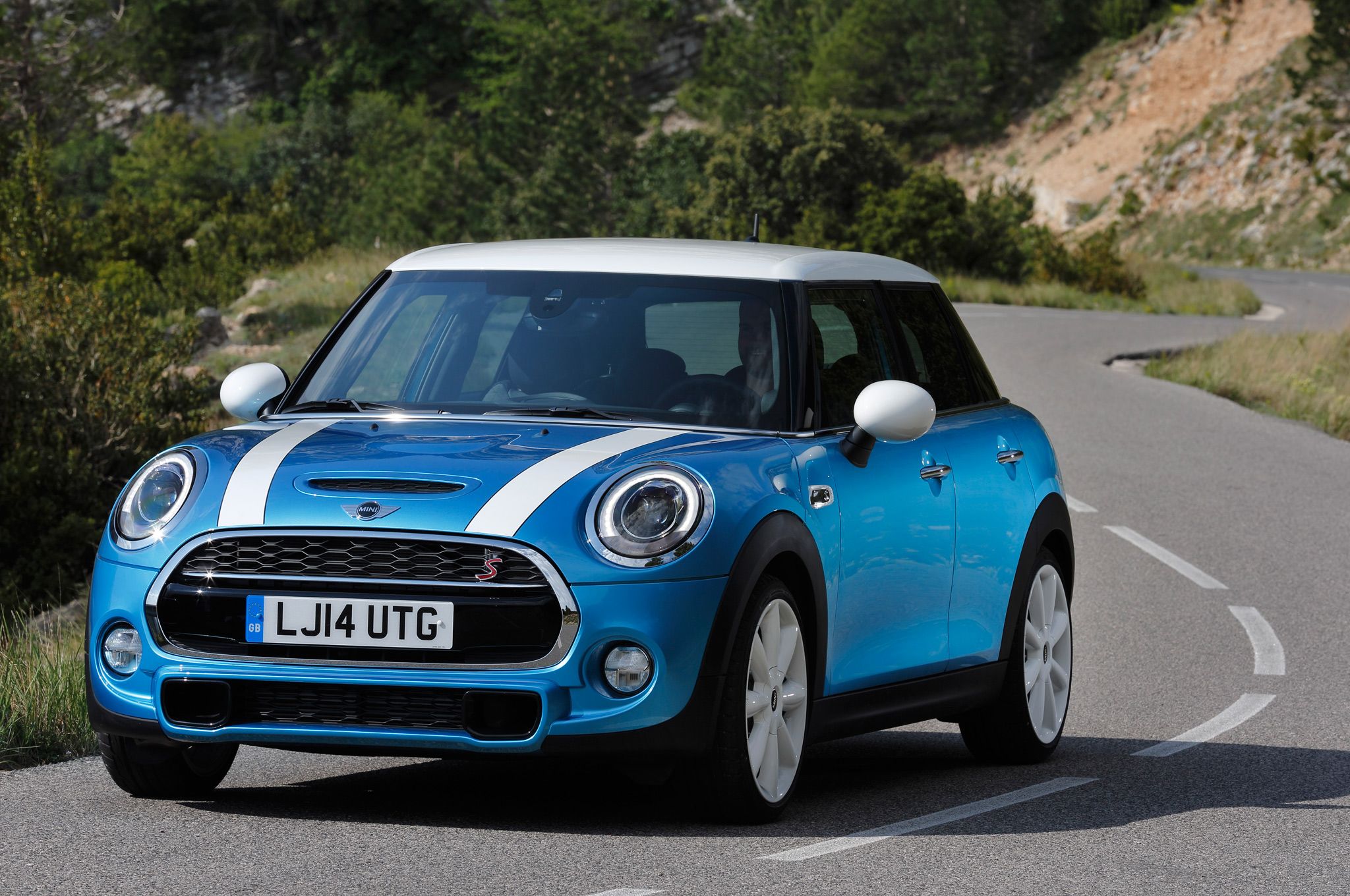
3. **The Mini Cooper: The Proud, Organized, and Playfully Unpredictable Individual**With deep roots in British motorsport, the Mini Cooper effortlessly balances charm with clever engineering, appealing to drivers across all age groups. Whether it’s a classic model from the 1960s or a sleek modern version, those who choose a Mini are characterized by an undeniable sense of pride – not just in their distinctive car, but in their life’s achievements, often coupled with high levels of confidence.
Our psychologist, Chambers, highlights that Mini Cooper drivers are typically highly organized, a trait perhaps necessitated by the car’s compact dimensions. Yet, beneath this structured exterior, there often lies a playful spirit that embraces unpredictability. These individuals are usually mindful, paying close attention to the feelings of others, and prefer a relaxed approach to life, avoiding overly crowded schedules.
Honestly, if your life were a movie, the Mini Cooper would undoubtedly be your stylish, fast-talking sidekick. It perfectly encapsulates a personality that is both meticulous and spontaneous, confident yet considerate. Driving a Mini tells the world you’re someone who values quality, efficiency, and a touch of spirited adventure, all wrapped up in a package that turns heads without being ostentatious.
Car Model Information: 2013 MINI Coupe Cooper S
Sp: uk
Caption: 1959 Morris Mini-Minor (first one built)
Name: Mini
Aka: Austin 850,Rover Mini,Austin Cooper,Austin Mini,Austin Partner,Austin Seven,Innocenti Mini,Leyland Mini,Morris 850,Morris Mascot,Morris Mini Minor,Riley Elf,Wolseley 1000 (South Africa),Wolseley Hornet
Layout: Front-engine, front-wheel-drive layout
Manufacturer: British Motor Corporation,British Leyland,Rover Group
Production: 1959–2000 (5.38 million)
Class: City car
BodyStyle: sedan (car),convertible,Station wagon,sedan delivery,coupe utility
Engine: BMC A-series engine,Straight-four engine
Designer: Alec Issigonis,John Sheppard (car designer)
Transmission: 4-speed manual,AP automatic transmission,5-speed manual (optional extra on some later models)
Length: cvt,cvt,cvt
Width: cvt
Height: cvt
Weight: cvt
Wheelbase: cvt,cvt
Related: Mini Moke,Austin Metro,Innocenti Mini,Mini Wildgoose,Mini Marcos
Successor: Austin Metro,Mini Hatch
Assembly: Panmure, New Zealand
Categories: 1960s cars, 1970s cars, 1980s cars, 1990s cars, 2000s cars
Summary: The Mini is a very small two-door, four-seat car, produced for four decades over a single generation, with many names and variants, by the British Motor Corporation (BMC) and its successors British Leyland and the Rover Group, and finally (briefly) under BMW ownership. Minis were built as fastbacks, estates, convertibles, and various other body styles. Minus a brief 1990s hiatus, from 1959 into 2000, an estimated 5.38 million of all variations combined were built, and the Mini’s engines also powered another 2 million Mini Metros, though the Mini eventually outlasted its successor.
Initially, the Mini was marketed under the Austin and Morris names, as the Austin Seven and Morris Mini-Minor; the Austin Seven was renamed Austin Mini in 1962 and Mini became a marque in its own right in 1969. Retrospectively, the car is known as the “Classic Mini” to distinguish it from the modern MINI family of vehicles produced since 2001 by German carmaker BMW, who took ownership of the Mini name following the sale of Rover Group in 2000.
This distinctive two-door car was designed for BMC by Sir Alec Issigonis. Its space-saving transverse engine and front-wheel drive layout – allowing 80% of the area of the car’s floorpan to be used for passengers and luggage – influenced a generation of car makers. The front-wheel-drive, transverse-engine layout were used in many other “supermini” style car designs such as Honda N360 (1967), Nissan Cherry (1970), and Fiat 127 (1971). The layout was also adapted for larger subcompact designs. In 1999, the Mini was voted the second-most influential car of the 20th century, behind the Ford Model T, and ahead of the Citroën DS and Volkswagen Beetle. It is also considered an icon of 1960s British popular culture.
The Mini Mark I had three major UK updates: the Mark II, the Clubman, and the Mark III. Within these was a series of variations, including an estate car, a pick-up, a van, and the Mini Moke, a jeep-like buggy. The performance versions, the Mini Cooper and Cooper “S”, were successful as both race and rally cars, winning the Monte Carlo Rally in 1964, 1965, and 1967. The Mini was manufactured in England at the Longbridge plant in Birmingham located next to BMC’s headquarters and at the former Morris Motors plant at Cowley, as well as in Australia (Victoria Park/Zetland BMC Australia factory) and later also in Spain (Authi), Belgium, Italy (Innocenti, as the Innocenti Mini), Chile, Malta, Portugal, South Africa, Uruguay, Venezuela, and Yugoslavia (IMV). In 1980, British Leyland launched the Mini’s follow-up, the Austin Metro, however the Mini outlasted it and continued to be produced at Longbridge until October 2000.
Get more information about: Mini
Buying a high-performing used car >>>
Brand: Mini Model: Cooper
Price: $12,425 Mileage: 78,956 mi.

4. **The Mercedes-Benz C-Class: The Cautious Achiever Who Values Understated Excellence**Prestige quietly permeates the Mercedes-Benz C-Class, a vehicle that has been a favorite among discerning drivers since its launch in 1993. This car speaks volumes without shouting, appealing to cautious achievers who seek excellence and refined comfort, but prefer to do so with a sophisticated restraint. Its rich heritage and luxurious appointments align perfectly with a deep-seated desire for security, elegantly wrapped in a package of opulence.
If you drive a C-Class, it suggests a personality that is on a trajectory of success, yet one that approaches ambition with a thoughtful, measured pace. You are climbing, but you’re doing it quietly, understanding that the smoothest path often leads to the most secure destinations. This choice indicates a value for proven quality and a desire for personal comfort that doesn’t need to be overtly announced.
The C-Class driver values consistency and an established reputation, reflecting a preference for a steady, upward climb in both career and life. It’s a statement of quiet confidence and a recognition of lasting quality, projecting an image of someone who has achieved a significant level of success and enjoys the fruits of their labor with discernment and grace.
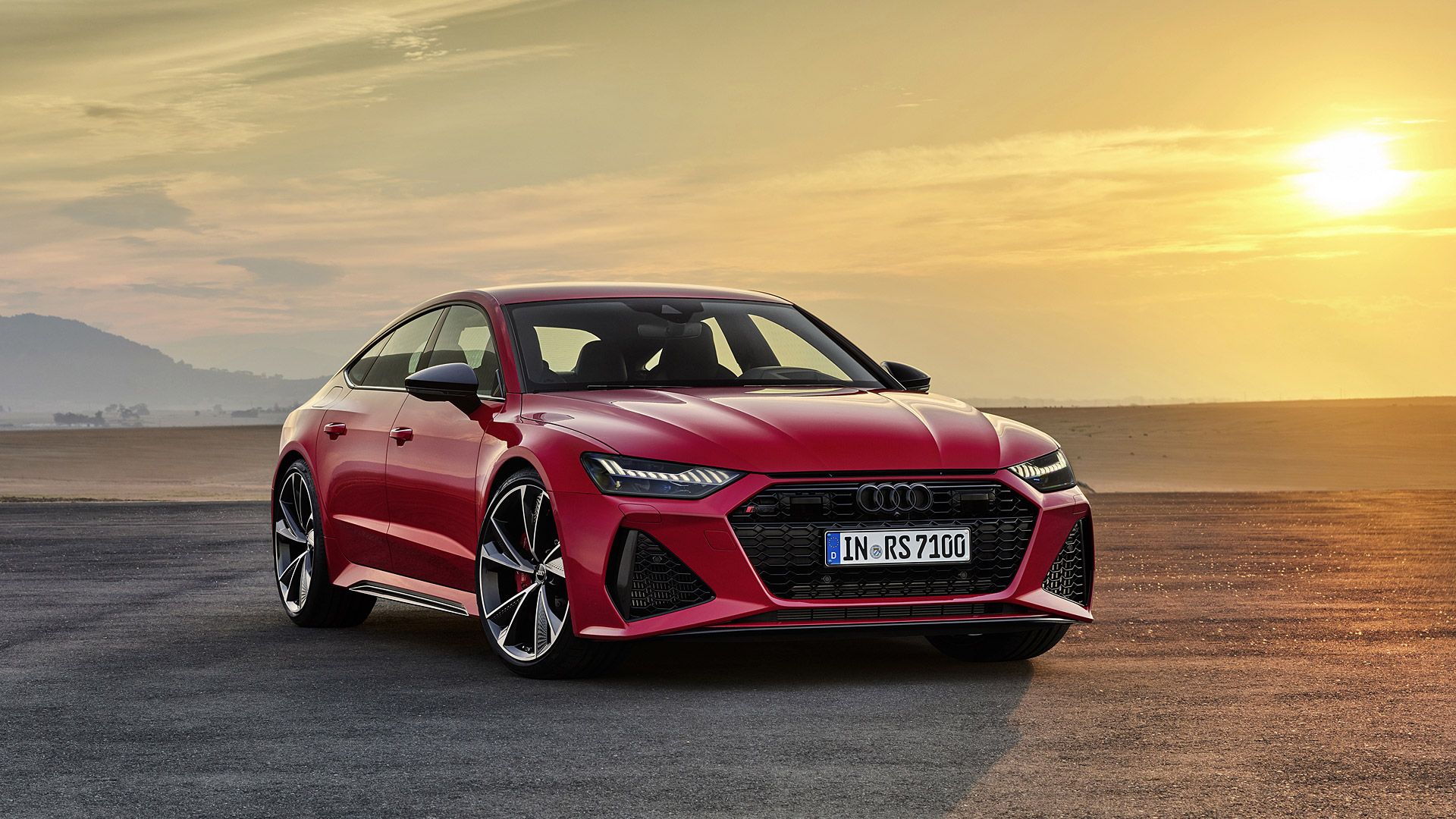
5. **The Audi A4: The Trend-Conscious Individual Seeking Polished Presentation**Known for its impressive performance and precision engineering, the Audi A4 has been a popular choice since its debut in 1994, with its Quattro system often reflecting a driver’s desire for control in life’s slippery moments. While Audi drivers sometimes find themselves in the spotlight for perceived negative traits, a deeper analysis reveals a more nuanced personality profile.
If you own an Audi, it’s highly probable that you value social acceptance and meticulously curate a polished presentation of yourself. Our expert psychologist highlights that Audi drivers are typically very stylish and tend to follow popular trends, making a statement without overtly standing out from the crowd. This delicate balance allows them to project an image of sophistication and awareness without appearing ostentatious.
Choosing an Audi reflects a desire for a vehicle that marries technological prowess with contemporary design, indicating a driver who is keen on presenting themselves as modern, capable, and socially aware. It’s a car that says you’re on the cutting edge, but you also understand the importance of fitting seamlessly into upscale social norms, demonstrating a refined taste that is both current and considerate.
Car Model Information: 2017 Audi A4 2.0T Premium
Name: Audi A4
Caption: Audi A4 (B9.5; facelift)
Manufacturer: Audi AG
Production: 1994–2025
Assembly: Germany,India,China,Indonesia,Ukraine
Class: Compact executive car
BodyStyle: Sedan (car)
Platform: Volkswagen Group B platform
Layout: Front-engine, front-wheel drive layout
Sp: uk
Predecessor: Audi 80
Successor: Audi A5#Third generation (2024)
Categories: 2000s cars, 2010s cars, 2020s cars, All-wheel-drive vehicles, All articles lacking reliable references
Summary: The Audi A4 is a line of luxury compact executive cars produced from 1994 to 2025 by the German car manufacturer Audi, a subsidiary of the Volkswagen Group. The A4 has been built in five generations and is based on the Volkswagen Group B platform. The first generation A4 succeeded the Audi 80. The automaker’s internal numbering treats the A4 as a continuation of the Audi 80 lineage, with the initial A4 designated as the B5-series, followed by the B6, B7, B8, and the B9.
The B8 and B9 versions of the A4 are built on the Volkswagen Group MLB platform shared with several models and brands across the Volkswagen Group. The Audi A4 automobile layout consists of a front-engine design, with transaxle-type transmissions mounted at the rear of the engine. The cars are front-wheel drive, or on some models, “quattro” all-wheel drive. The A4 is available as a sedan and station wagon. Historically, the second (B6) and third generations (B7) of the A4 also included a convertible version. For the B8 and B9 versions, the convertible, along with a new coupé and 5-door liftback variant, was spun-off by Audi into a new nameplate called the Audi A5.
The B9 generation A4 and A5 will be replaced by B10 version of A5, as part of Audi’s new naming convention.
Get more information about: Audi A4
Buying a high-performing used car >>>
Brand: Audi Model: A4
Price: $11,490 Mileage: 146,107 mi.
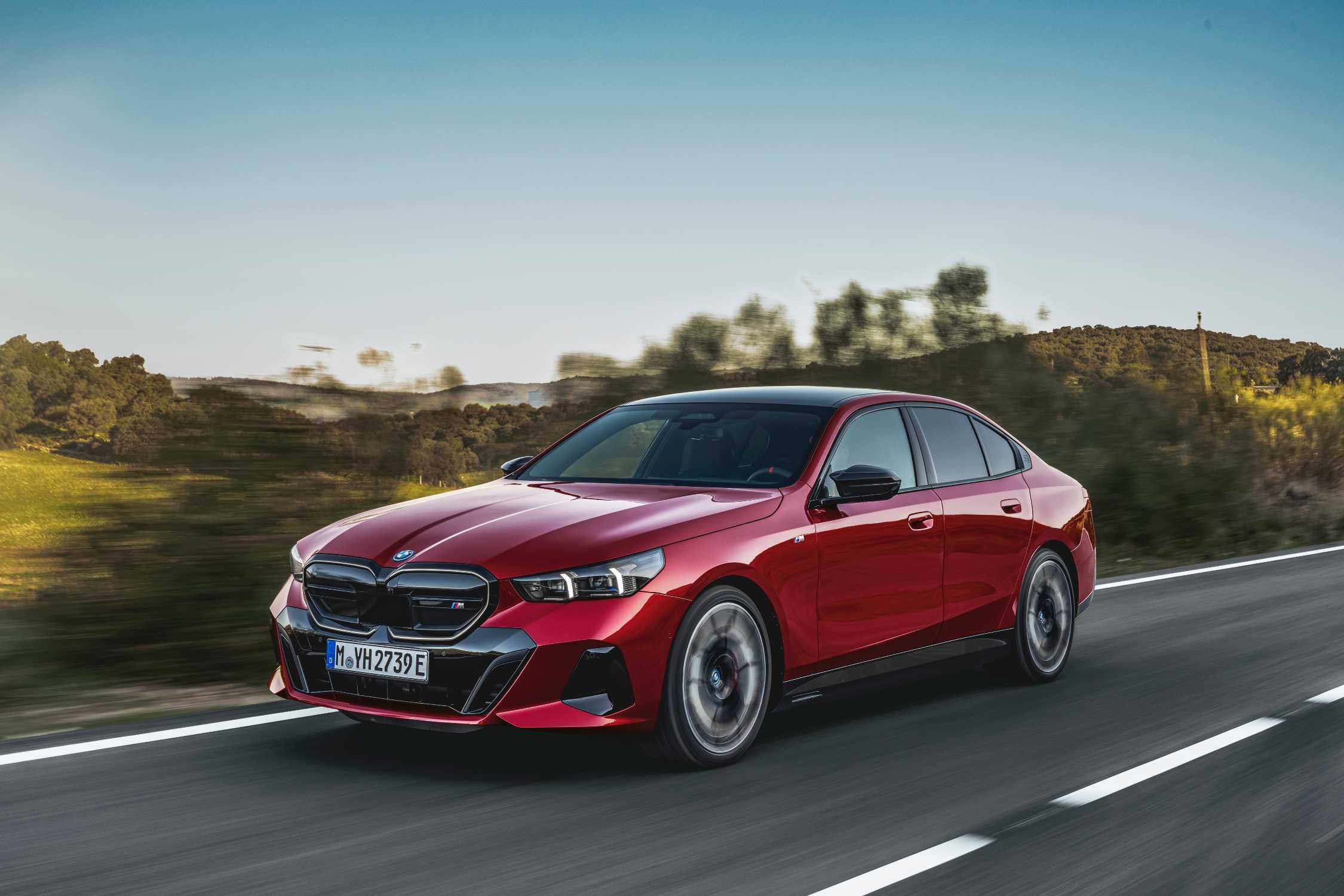
6. **The BMW 3 Series: The Self-Confident Pursuer of Excellence and Luxury**Balance is a defining characteristic of the choices made by BMW 3 Series owners, precisely what this vehicle has delivered since its global success launched in 1975. Positioned as the ‘Ultimate Driving Machine,’ BMW has long cultivated an image of a superior, luxury brand, which inherently attracts confident drivers. This car masterfully merges sportiness with sophisticated elegance, creating a compelling driving experience.
Is this your car? Then you likely pursue excellence relentlessly in your career and demand peak efficiency from every aspect of your life, including your daily commute. Our expert confirms that BMW drivers don’t lack confidence; they are typically brave, given the existing stereotypes, and possess a strong sense of self-belief. Recent research even suggests that 70% of BMW owners perceive themselves as more knowledgeable drivers.
It comes as little surprise that BMW drivers also appreciate a touch of ‘bling’ and actively strive for a taste of the high life. Driving a 3 Series is a clear statement of ambition, capability, and a desire for the finer things. It reflects a personality that values precision engineering, dynamic performance, and the unapologetic enjoyment of luxury, all while navigating the road with distinct self-assurance.
Car Model Information: 2024 INFINITI QX60 Luxe
Name: BMW 3 Series
Manufacturer: BMW
Production: 1975–present
Class: Compact executive car
Predecessor: BMW 02 Series
Categories: 1970s cars, 1980s cars, 1990s cars, 2000s cars, 2010s cars
Summary: The BMW 3 series is a line of compact executive cars manufactured by the German automaker BMW since May 1975. It is the successor to the 02 series and has been produced in seven generations.
The first generation of the 3 Series was only available as a 2-door saloon; the model range expanded to include a 4-door saloon, 2-door convertible, 2-door coupé, 5-door estate, 5-door liftback (“Gran Turismo”; discontinued in 2019) and 3-door hatchback body styles. Since 2013, the coupé and convertible models have been marketed as the 4 Series; these styles no longer being included in the 3 Series.
The 3 Series is BMW’s best-selling model line, accounting for around 30% of the BMW brand’s annual total car sales, and has won numerous awards throughout its history. The M version of the 3 series, M3, debuted with the E30 M3 in 1986.
Get more information about: BMW 3 Series
Buying a high-performing used car >>>
Brand: BMW Model: 3 Series
Price: $41,679 Mileage: 3,989 mi.
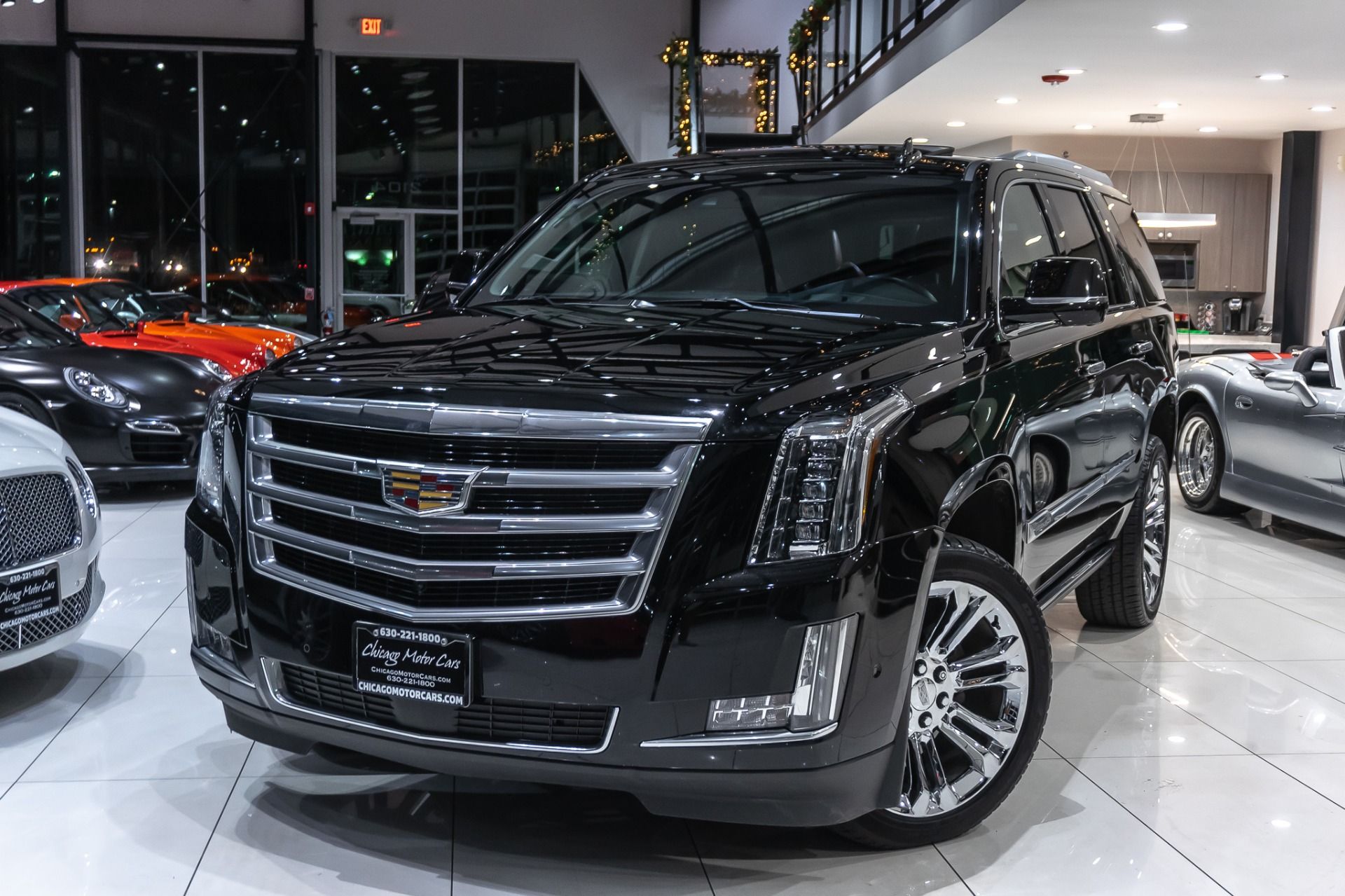
7. **The Cadillac Escalade: The Bold Individual Who Commands Status and Presence**Luxury, for the Cadillac Escalade driver, is not subtle; it is a transformative statement. Launched in 1999, the Escalade initially faced criticism, often being perceived as a mere rebadged GMC Yukon. However, by 2002, it had decisively solidified its status, becoming an undeniable symbol of wealth and power, asserting its commanding presence on the road.
Owning an Escalade strongly suggests a personality that thrives on standing out and making a definitive statement. This is a vehicle for those who embrace the grand gesture, unafraid to project their success and influence. Our expert psychologist notes that Range Rover drivers, often favored by celebrities and sports stars, also prioritize safety, and their elevated driving position inherently indicates a desire for high social status – a sentiment that strongly resonates with Escalade owners as well.
The Escalade is more than just an SUV; it’s a mobile declaration of achievement and a desire to be seen. It reflects a driver who values not just luxury, but also the sheer impact and significance of their choices. This is a car for those who enjoy taking up space, both literally and metaphorically, and who expect their presence to be acknowledged and respected wherever they go. It’s a testament to a desire for command and an undeniable mark of prosperity.
Car Model Information: 2023 Cadillac Escalade Premium Luxury
Name: Cadillac Escalade
Caption: Fifth generation Cadillac Escalade
Manufacturer: Cadillac
Production: 1998–present,2002–present (ESV),2001–2013 (EXT),2008–2013 (Hybrid)
ModelYears: 1999–2000,2002–present
Class: Full-size,luxury car,sport utility vehicle
Related: ubl
Layout: Front-engine, rear-wheel drive layout,Front-engine, four-wheel drive layout
Categories: 2000s cars, 2010s cars, 2020s cars, All-wheel-drive vehicles, All Wikipedia articles in need of updating
Summary: The Cadillac Escalade is a full-size luxury SUV manufactured by General Motors and marketed by Cadillac as its first major entry into the SUV market. The Escalade was introduced for the 1999 model year in response to an influx of new luxury SUVs in the late 1990s including the Mercedes-Benz M-Class, Range Rover, Lexus LX, and Ford’s 1998 debut of the Lincoln Navigator. The Escalade project went into production only ten months after it was approved. The Escalade is built in Arlington, Texas.
The term “escalade” refers to a siege warfare tactic of scaling defensive walls or ramparts with the aid of ladders or siege towers. More generally, it is a French word which is the noun-equivalent form of the French verb escalader, which means “to climb or scale”.
The Escalade is currently sold in North America and select international markets (Europe and Asia) where Cadillac has official sales channels. The Escalade ESV (Escalade Stretch Vehicle) is sold in North America, Russia, and the Middle East, but is only available by special order in some international markets. The right-hand-drive Escalade and Escalade ESV are available through third-party conversion specialists without official agreement with Cadillac in Australian, Oceanic, and Japanese markets.
On August 8, 2023, GM presented the Escalade IQ, an all-electric version of the Escalade, and the third model in Cadillac’s EV line, after the Celestiq, and Lyriq. It is expected to go on sale in late 2024 for the 2025 model year, with a starting price of $130,000.
The Escalade has gone through five generations, the most recent (the fifth) prsented in 2021, noted for its technology and self-driving capability. The fifth generation Escalade is nearly two metres high, and was criticized by The Verge for its excessive size and hazard to pedestrians.
Get more information about: Cadillac Escalade
Buying a high-performing used car >>>
Brand: Cadillac Model: Escalade
Price: $65,495 Mileage: 44,458 mi.
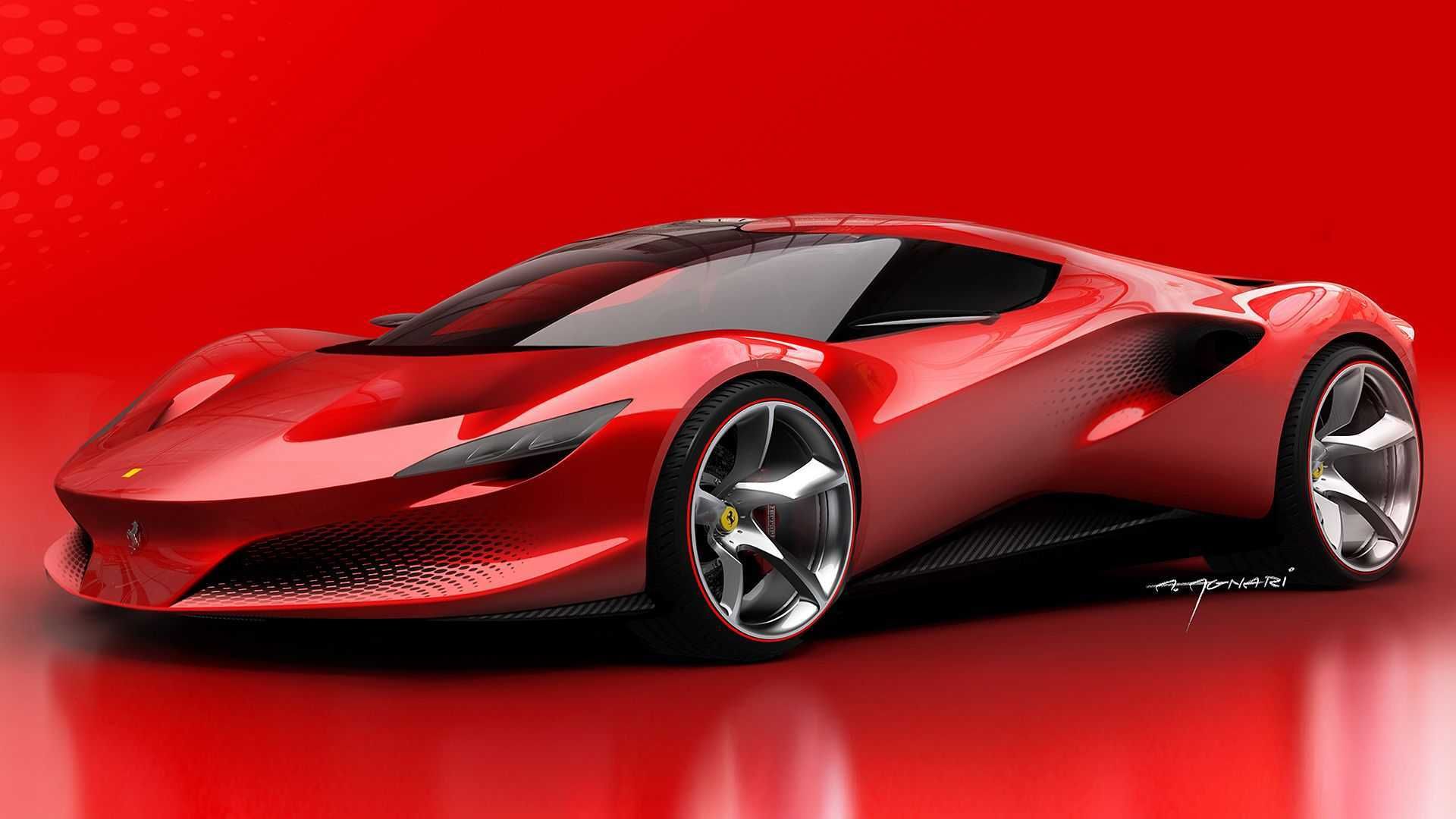
8. **The Ferrari 488: The High-Sensation Seeker with an Eye for Elegance**When excess truly meets elegance, you find yourself behind the wheel of a Ferrari 488. Debuted in 2015 with its potent 3.9L V8 twin-turbo engine, this vehicle isn’t merely designed for speed; it’s meticulously crafted for the thrill-seeker. Choosing a Ferrari 488 unequivocally suggests high sensation-seeking tendencies and a powerful status motivation, signaling a driver who lives life at its most exhilarating pace.
For the individual who owns this Italian masterpiece, precision is paramount, but only if it results in a pulse-spiking experience. It’s a clear declaration of a personality that demands intense experiences and isn’t shy about showcasing their achievements and adventurous spirit. This car embodies a life lived with unbridled passion, where every journey is an event, and every moment is charged with dynamism.
Driving a Ferrari 488 is thus a profound statement of personal values, intertwining a love for precision engineering with an insatiable craving for adrenaline. It reflects an individual whose pursuit of the finer things extends beyond mere luxury, embracing a lifestyle defined by exhilaration, boldness, and a steadfast commitment to living life at full throttle, on and off the road.
Car Model Information: 2019 Ferrari 488 GTB 2DR CPE
Name: Ferrari 488
Manufacturer: Ferrari
Production: 2015–2020
Assembly: Maranello
Designer: Flavio Manzoni
Class: Sports car
BodyStyle: berlinetta
Layout: Rear-engine, rear-wheel-drive layout
Engine: Ferrari F154 engine,twin-turbo,V8 engine
Powerout: ubl
Abbr: on
Transmission: Dual clutch transmission
Wheelbase: 2650 mm
Length: 4568 mm
Width: 1952 mm
Height: 1213 mm
Weight: {{convert,3241,lb,kg,0,abbr=on,order=flip
Order: flip (kerb, Pista)
Predecessor: Ferrari 458
Successor: Ferrari F8
Sp: uk
Categories: Articles with short description, Cars discontinued in 2019, Cars introduced in 2015, Commons category link is on Wikidata, Ferrari vehicles
Summary: The Ferrari 488 (Type F142M) is a mid-engine sports car produced by the Italian automobile manufacturer Ferrari. The car replaced the 458, being the first mid-engine Ferrari to use a turbocharged V8 since the F40. It was succeeded by the Ferrari F8.
The car is powered by a 3.9-litre twin-turbocharged V8 engine, smaller in displacement but generating a higher power output than the 458’s naturally aspirated engine. The 488 GTB was named “The Supercar of the Year 2015” by car magazine Top Gear, as well as becoming Motor Trend’s 2017 “Best Driver’s Car”. Jeremy Clarkson announced the 488 Pista as his 2019 Supercar of the Year.
Get more information about: Ferrari 488
Buying a high-performing used car >>>
Brand: Ferrari Model: 488
Price: $279,994 Mileage: 895 mi.
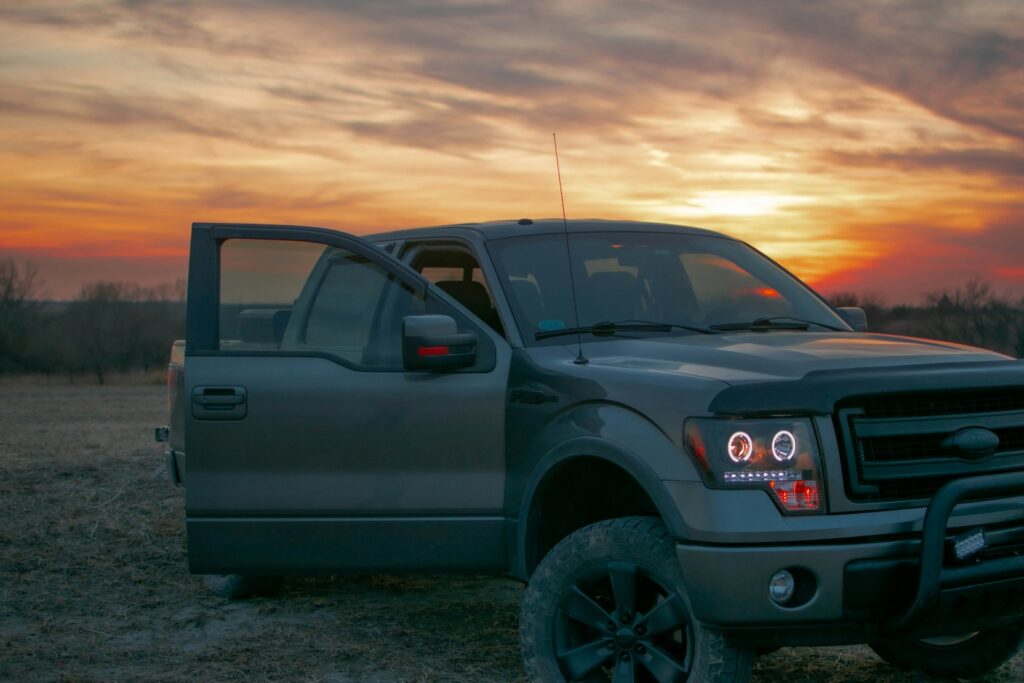
9. **The Ford F-150: The Dependable Workhorse with a Legacy of Loyalty**For many, utility isn’t just a feature; it’s a fundamental priority, and nothing embodies this quite like the Ford F-150. As America’s best-selling truck since the 1980s, the F-150 mirrors the loyalty and reliability at its core. This vehicle appeals to drivers who value capability and steadfast performance, signaling a personality deeply rooted in practicality and an unwavering commitment to getting the job done.
Owners of the Ford F-150 typically possess a distinctive workhorse mentality, often preferring to fix things before replacing them and consistently seeing tasks through to completion. This choice reflects a driver who prioritizes dependability over dazzling aesthetics, understanding that the true value of their vehicle lies in its enduring legacy and robust functionality. It’s a car less about fleeting trends and more about enduring memories, like “hauling a camper toward your next memory.”
Ultimately, the F-150 stands as a testament to a pragmatic and committed individual. It speaks to someone hands-on, who values long-term utility and views their vehicle as an essential tool for navigating both life’s responsibilities and its adventures. This driver’s choice eloquently broadcasts a persona that is grounded, reliable, and deeply appreciative of a machine that truly performs as an extension of their industrious spirit.
Car Model Information: 2013 Ford F-150 FX2
Name: Ford F-Series
Caption: 2022 Ford F-150 Lariat Luxury
Manufacturer: Ford Motor Company
Aka: Ford Lobo (Mexico, 1992–present)
Production: 1948–present
Class: Pickup truck#Full-size pickup truck
Layout: Front-engine, rear-wheel-drive layout,rear-wheel drive
Predecessor: 1941 Ford
Categories: All-wheel-drive vehicles, All Wikipedia articles written in American English, All articles that may contain original research, All articles with unsourced statements, Articles that may contain original research from September 2020
Summary: The Ford F-Series is a series of light-duty trucks marketed and manufactured by Ford Motor Company since model year 1948 as a range of full-sized pickup trucks — positioned between Ford’s Ranger and Super Duty pickup trucks. Alongside the F-150 (introduced in 1975), the F-Series also includes the Super Duty series (introduced in 1999), which includes the heavier-duty F-250 through F-450 pickups, F-450/F-550 chassis cabs, and F-600/F-650/F-750 Class 6–8 commercial trucks.
Get more information about: Ford F-Series
Buying a high-performing used car >>>
Brand: Ford Model: F-150
Price: $14,852 Mileage: 143,822 mi.
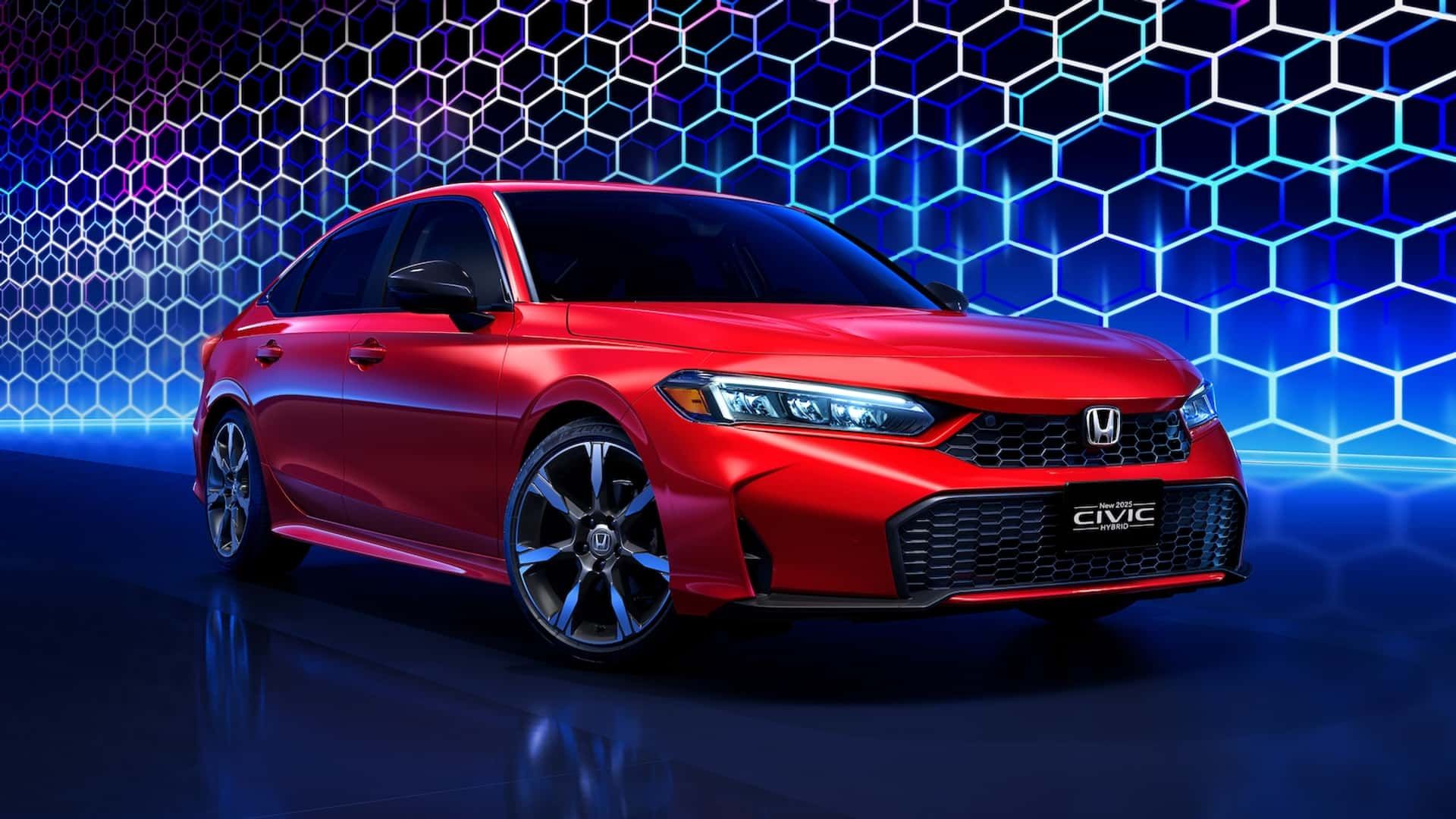
10. **The Honda Civic: The Practical Planner’s Reliable Companion**With over 27 million fans since its 1972 debut, the Honda Civic has achieved legendary status as a magnet for practical thinkers and careful planners. This enduring popularity isn’t accidental; it’s a direct reflection of its consistent ability to deliver reliability over flash, appealing to those who prioritize smart choices and unwavering consistency in their daily lives. Opting for a Civic signals a driver who values sensible decisions and long-term dependability.
Indeed, the Civic’s remarkable longevity in the automotive market mirrors its owners’ approach to life itself: steady, dependable, and consistently well-managed. This vehicle is chosen not for ostentatious display, but for its proven track record and its seamless integration into a well-ordered existence. It represents a commitment to functional excellence and a preference for substance over superficiality, a hallmark of a thoughtful and strategic individual.
Therefore, driving a Honda Civic is a subtle yet profound statement about one’s lifestyle, focusing on stability, financial prudence, and thoughtful planning. It speaks to an individual who recognizes the value of a solid investment and prefers a vehicle that reliably supports their meticulously planned life, reflecting a persona that is grounded, strategic, and profoundly appreciative of consistency in all its forms.
Car Model Information: 2024 Honda Civic EX-L
Caption: 2024 Honda Civic liftback
Manufacturer: Honda
Aka: ubl
Production: 1972–present
Class: Subcompact car
BodyStyle: fastback,Sedan (automobile)
Layout: Front-engine, front-wheel-drive layout,Front-engine, four-wheel-drive layout
Predecessor: Honda N600,Honda Z600
Categories: 1980s cars, 1990s cars, 2000s cars, 2010s cars, 2020s cars
Summary: The Honda Civic (Japanese: ホンダ・シビック, Hepburn: Honda Shibikku) is a series of automobiles manufactured by Honda since 1972. As of 2023, the Civic is positioned between the Honda Fit/City and Honda Accord in Honda’s global passenger car line-up. It is one of the best-selling automobiles in history, with over 27 million units sold through 2021.
The first-generation Civic was introduced in July 1972 as a two-door fastback sedan, followed by a three-door hatchback that September. With a 1,169 cc transverse engine and front-wheel drive, the car provided good interior space despite its small overall dimensions. Initially gaining a reputation for being fuel-efficient, reliable and environmentally friendly, later iterations have become known for performance and sportiness, especially the Civic Si, SiR, and Type R versions. It is currently in its eleventh generation, which has been produced since 2021.
The Civic has often been rebadged for international markets, and it served as the basis for the Honda CR-X, the Honda CR-X del Sol, the Concerto, the first generation Prelude, the Civic Shuttle (which later became the Orthia) and the CR-V (which in turn was used as the basis for the Honda FR-V).
Get more information about: Honda Civic
Buying a high-performing used car >>>
Brand: Honda Model: Civic
Price: $25,285 Mileage: 31,016 mi.
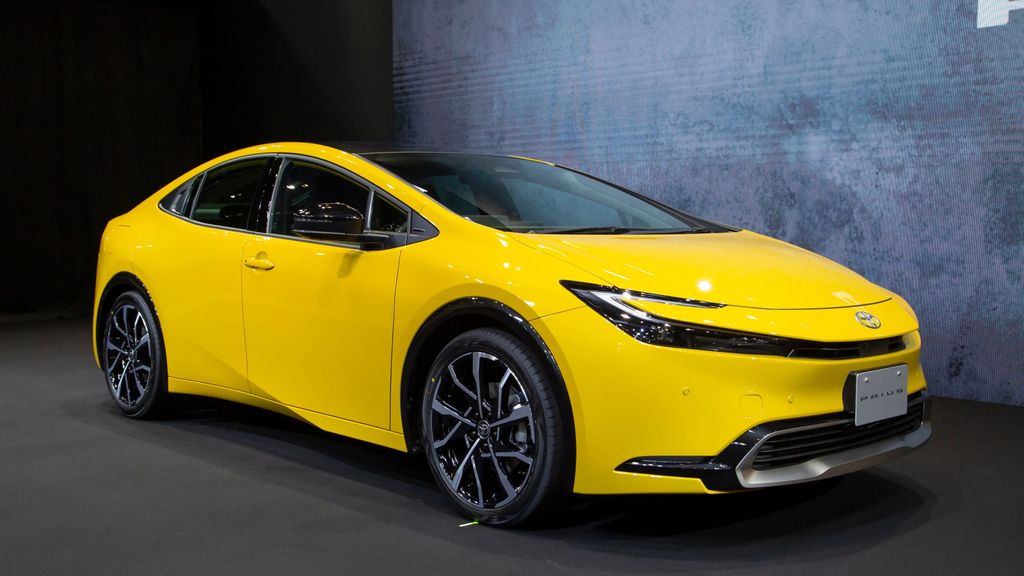
11. **The Toyota Prius: The Eco-Conscious and Financially Savvy Trailblazer**Choosing a Toyota Prius is more than just selecting a car; it’s a clear declaration of a commitment to efficiency and environmental consciousness. Drivers of this iconic hybrid proudly telegraph their dedication to sustainable living, valuing “every extra mile per gallon” with the same earnestness others apply to their personal health goals. This choice reflects a proactive stance on reducing one’s carbon footprint and a forward-thinking approach to resource management.
Prius owners are often categorized as socially conscious individuals who, while acknowledging cars as a necessary evil, are actively playing their part in fostering a healthier planet. These drivers, who are often willing to pay a premium for hybrid and electric technology, highlight a focus on the “long-term impact of your decisions rather than short-term cost and convenience.” It’s a statement that aligns a generous heart with a pragmatic wallet, showcasing a sophisticated understanding of value beyond immediate price tags.
Ultimately, the Toyota Prius signals a mindful individual deeply invested in ecological responsibility and intelligent resource allocation. It’s a subtle yet powerful affirmation of deeply held values, demonstrating a person who is both financially discerning and profoundly committed to building a sustainable future, doing so without needing overt or flashy displays of wealth or virtue.
Car Model Information: 2017 Toyota Prius Prime Plus
Name: Toyota Prius
Caption: Fifth generation Prius (XW60)
Manufacturer: Toyota
Production: December 1997 – present
ModelYears: 2001–present (US)
Class: ubl
BodyStyle: unbulleted list
Layout: unbulleted list
Sp: uk
Categories: 2000s cars, 2010s cars, 2020s cars, All-wheel-drive vehicles, All Wikipedia articles in need of updating
Summary: The Toyota Prius ( PREE-əss) (Japanese: トヨタ・プリウス, Hepburn: Toyota Puriusu) is a compact/small family liftback (supermini/subcompact sedan until 2003) produced by Toyota. The Prius has a hybrid drivetrain, which combines an internal combustion engine and an electric motor. Initially offered as a four-door sedan, it has been produced only as a five-door liftback since 2003.
The Prius was developed by Toyota to be the “car for the 21st century”; it was the first mass-produced hybrid vehicle, first going on sale in Japan in 1997 at all four Toyota Japan dealership chains, and subsequently introduced worldwide in 2000.
In 2011, Toyota expanded the Prius family to include the Prius v, an MPV, and the Prius c, a subcompact hatchback. The production version of the Prius plug-in hybrid was released in 2012. The second generation of the plug-in variant, the Prius Prime, was released in the U.S. in November 2016. The Prius family totaled global cumulative sales of 6.1 million units in January 2017, representing 61% of the 10 million hybrids sold worldwide by Toyota since 1997. Toyota sells the Prius in over 90 markets, with Japan and the United States being its largest markets.
Get more information about: Toyota Prius
Buying a high-performing used car >>>
Brand: Toyota Model: Prius
Price: $22,195 Mileage: 60,410 mi.
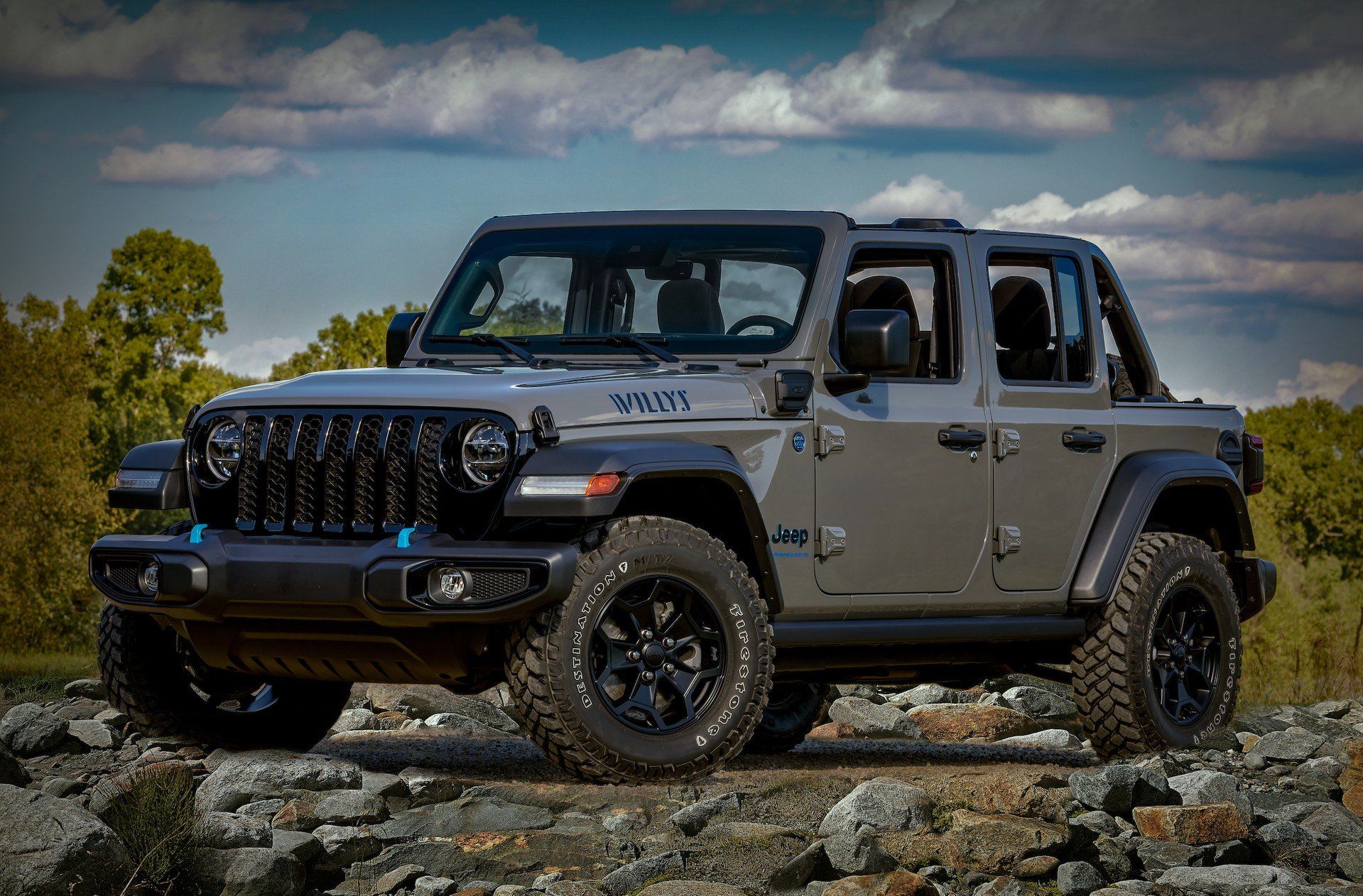
12. **The Jeep Wrangler: The Unstoppable Adventurer and Freedom Seeker**With a heritage tracing back to WWII, the Jeep Wrangler was never engineered for smooth rides or straight, predictable paths. Instead, it was built for the rugged, the untamed, and the utterly unpredictable. This iconic vehicle powerfully calls to those who crave freedom and instinctively embrace life’s challenges, signaling a personality that is always ready for the next great adventure.
Owning a Wrangler strongly suggests an individual who approaches life’s obstacles with the same head-on determination they would a rocky trail. It’s a quintessential choice for the “adventure-loving person” whose SUV is perpetually stocked with camping gear, ready to transform into a camper at a moment’s notice. This car embodies a passion for exploring rugged terrains, taking spontaneous road trips, and embracing anything that beckons a spirited challenge.
Thus, the Jeep Wrangler is far more than an off-road vehicle; it’s a profound symbol of unbridled spirit and unwavering independence. It indicates a driver who is resilient, self-reliant, and perpetually eager for exploration, viewing roads not as mere conduits, but as exhilarating invitations to discovery. This is a car for those who live life on their own terms, always prepared to forge their own path.
Car Model Information: 2017 Jeep Wrangler Unlimited Sport
Name: Jeep Wrangler
Caption: Jeep Wrangler Unlimited, Sahara edition
Manufacturer: Jeep
Class: Compact SUV
Production: 1986–present
Predecessor: Jeep CJ
Layout: Front-engine, rear-wheel-drive layout,rear-wheel drive
Chassis: Body-on-frame
Related: AIL Storm
Categories: 1980s cars, 1990s cars, 2000s cars, 2010s cars, All-wheel-drive vehicles
Summary: The Jeep Wrangler is a series of compact and mid-size four-wheel drive off-road SUVs manufactured by Jeep since 1986, and currently in its fourth generation. The Wrangler JL, the most recent generation, was unveiled in late 2017 and is produced at Jeep’s Toledo Complex.
The Wrangler is a direct progression from the World War II Jeep, through the CJ (Civilian Jeeps) produced by Willys, Kaiser-Jeep, and American Motors Corporation (AMC) from the mid-1940s through the 1980s. Although neither AMC nor Chrysler (after it purchased AMC in 1987) have claimed that the Wrangler was a direct descendant of the original military model — both the CJ Jeeps and the conceptually consistent Wrangler, with their solid axles and open top, have been called the Jeep model as central to Jeep’s brand identity as the rear-engine 911 is to Porsche.
Similar to the Willys MB and the CJ Jeeps before it, all Wrangler models continue to use a separate body and frame, rigid live axles both front and rear, a tapering nose design with flared fenders, a fold-flat windshield and can be driven without doors. Also, with few exceptions, they have part-time four-wheel drive systems, with the choice of high and low gearing, and standard open bodies with removable hard or soft tops. However, the Wrangler series was specifically redesigned to be safer and more comfortable on-road, to attract more daily drivers, by upgrading its suspension, drivetrain, and interior, compared to the CJ line. The suspension on all Wranglers included trackbars and anti-roll bars, and, from the 1997 TJ onwards, front and rear coil springs instead of the previous leaf springs.
From 2004 on, the Wrangler has been complemented with long-wheelbase versions, called Wrangler Unlimited. 2004-2006 models were longer versions with 2 doors. In 2004 only automatic transmission-equipped “Unlimited” versions were sold. In 2005 both an automatic and manual 6-speed (NSG-370) were offered. Since 2007, the long-wheelbase Wranglers were four-door models, offering over 20 in (508 mm) more room. By mid-2017 the four-door models represented three-quarters of all new Wranglers on the market.
Get more information about: Jeep Wrangler
Buying a high-performing used car >>>
Brand: Jeep Model: Wrangler
Price: $20,725 Mileage: 111,103 mi.
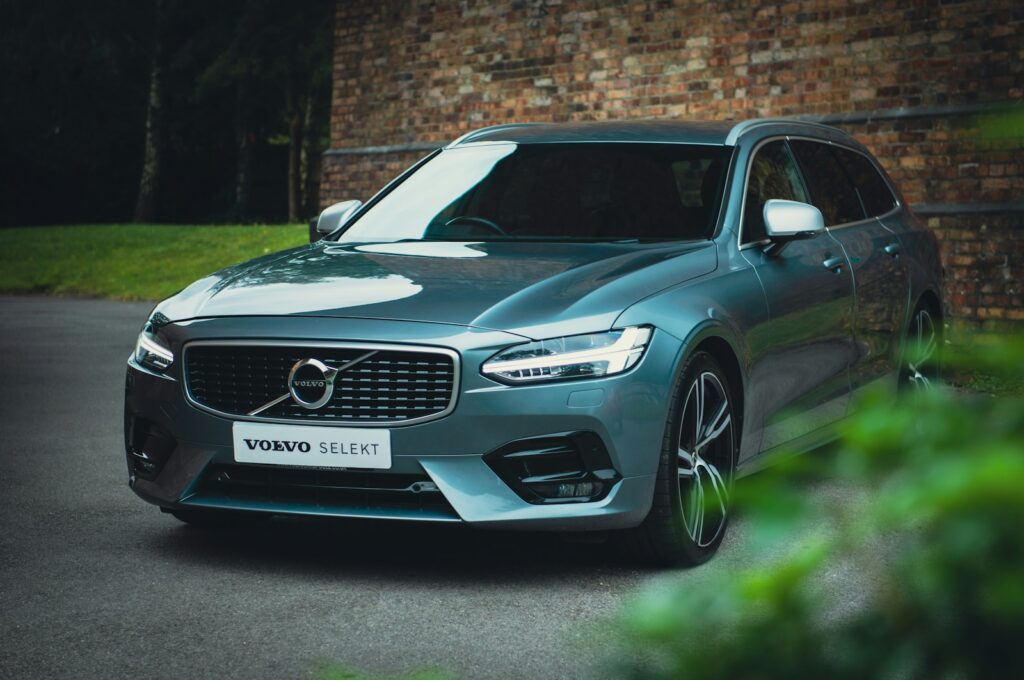
13. **The ‘Old Hippie’: A Timeless Statement of Counter-Culture Values**Some vehicles transcend mere transportation, becoming vivid declarations of a lifestyle, even an era. If you’re riding around in an old Volvo station wagon, a 1960s Volkswagen Beetle, or, even more definitively, a 1960s Volkswagen van, you are effectively advertising to the world that you embody the spirit of an ‘old hippie.’ These vehicles are not just cars; they are extensions of a storied cultural movement.
These choices are more than just nostalgic; they were “the vehicles of choice for the flower power generation,” serving as an unmistakable signifier for those who “were at the original Woodstock.” Such drivers often appear to be “stuck in a time warp,” continuing to embrace the aesthetic and ethos from a pivotal time in their lives, long after mainstream trends have moved on. Their vehicle is a tangible link to a past where peace, love, and individual expression reigned supreme.
This distinct car choice, therefore, functions as a powerful, albeit sometimes anachronistic, statement of enduring values and a profound connection to a significant cultural era. It reflects a persona that prioritizes community, environmental harmony, and authentic self-expression above contemporary status symbols, preferring instead to carry forward a legacy of a different, more soulful kind.
Car Model Information: 2010 Volkswagen Routan SE
Name: Volkswagen Type 2
Manufacturer: Volkswagen
Aka: unbulleted list
Production: November 1949 – present
Successor: Volkswagen ID. Buzz
Class: Light commercial vehicle
BodyStyle: unbulleted list
Platform: Volkswagen Group T platform
Layout: unbulleted list
Sp: uk
Categories: 1950s cars, 1960s cars, 1970s cars, 1980s cars, 1990s cars
Summary: The Volkswagen Transporter, initially the Type 2, is a range of light commercial vehicles, built as vans, pickups, and cab-and-chassis variants, introduced in 1950 by the German automaker Volkswagen as their second mass-production light motor vehicle series, and inspired by an idea and request from then-Netherlands-VW-importer Ben Pon.
Known officially (depending on body type) as the Transporter, Kombi or Microbus – or informally as the Volkswagen Station Wagon (US), Bus (also US), Camper (UK) or Bulli (Germany), it was initially given the factory designation ‘Type 2’, as it followed – and was for decades based on – the original ‘Volkswagen’ (“People’s Car”), which became the VW factory’s ‘Type 1’ after the post-war reboot, and mostly known, in many languages, as the “Beetle”.
The Volkswagen Transporter has been built in many variants. It may be best known for its panel vans, but it was also built as a small bus or minivan, with choices of up to 23 windows and either hinged or sliding side doors. From the first generation, both regular and crew-cab, as well as long- and short-bed pickups, were made, and multiple firms sprang up to manufacture varying designs of camper vans, based on VW’s Transporter models, to this day.
For the first 40 years, all VW Type 2 variants were forward control, with a VW-Beetle-derived flat-four engine in the rear, and all riding on the same (initial thirty years – T1 and T2), or similar (T3), 2.40 m (94 in) wheelbase as the Type 1 Beetle. As a result, all forward-control Type 2 pickups were either of standard-cab, long-bed or crew-cab, short-bed configuration, and because of the relatively high bed floor (above the rear, flat engine), most pickups came with drop sides in addition to the tailgate. In 1979, the third-generation Type 2 introduced an all-new, more square and boxy body, and in the 1980s also introduced a raised four-wheel-drive bus variant.
From the introduction of the fourth-generation Transporter in 1990, the vehicle layout changed to a more common front-engined one – no longer forward-control – and also changed from rear- to front-wheel drive, with four-wheel–drive remaining optional. From then on, the platform no longer shared technological legacy with the Beetle, and Volkswagen just called them ‘Transporter’, and no longer ‘Type 2’. The new models, though growing a bit in length, got a significantly longer wheelbase that pushed the wheels closer to the truck’s corners, noticeably reducing its front and rear overhangs, and extended-wheelbase models were also introduced.
Get more information about: Volkswagen Type 2
Buying a high-performing used car >>>
Brand: Volkswagen Model: Van
Price: $6,500 Mileage: 59,704 mi.

14. **The ‘Settled Down’ Commuter: Embracing Practicality and Predictability**Nothing quite broadcasts a life in “full nesting mode” like the choice of a classic commuter car: the Toyota Corolla, Honda Civic, or Volkswagen Jetta. These vehicles are the automotive equivalent of saying, “I’m hunkered down, paying off my mortgage while watching Netflix.” They are the epitome of safe, practical, reliable, and affordable transportation, signaling a driver whose priorities have firmly shifted towards stability and domesticity.
These standard commuter cars are chosen by individuals who are distinctly cost-conscious and generally not driven by a fervent interest in automotive spectacle. They serve their purpose efficiently, transporting occupants from the suburbs to work and back each day. On weekends, these reliable sedans can often be found populating the parking lots of Costco or Home Depot, or parked alongside family-friendly running trails, reflecting a life built around routine and practical necessities.
Ultimately, driving one of these cars is a clear communication of a life stage where practicality, financial prudence, and family responsibilities take precedence. It speaks to an individual who values routine, dependability, and functionality above ostentatious displays or overt style, opting for a vehicle that seamlessly supports a comfortable, predictable, and responsible lifestyle focused on the essentials.
Our automotive choices are profoundly insightful, weaving a narrative that extends far beyond horsepower and paint finishes. Each vehicle, from the roaring Ferrari to the unassuming Civic, acts as a silent messenger, proclaiming our aspirations, values, and the very essence of who we are. As you navigate the winding roads of life, consider what story your car is telling – because on the grand highway of existence, your ride is always speaking volumes about the journey you choose to undertake and the person you choose to be.


